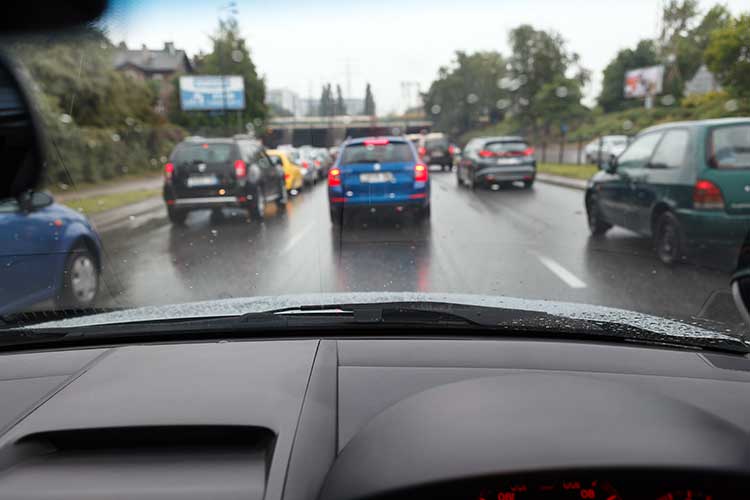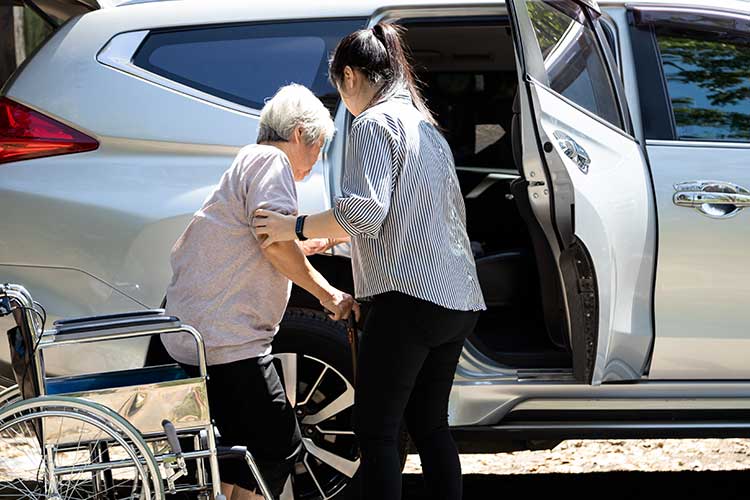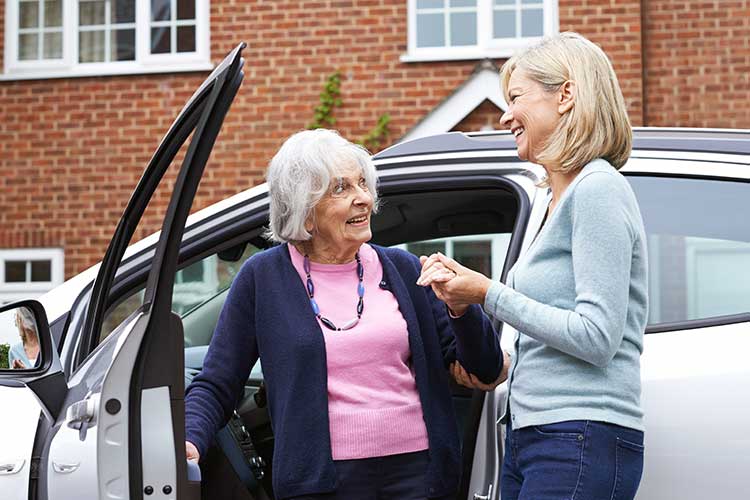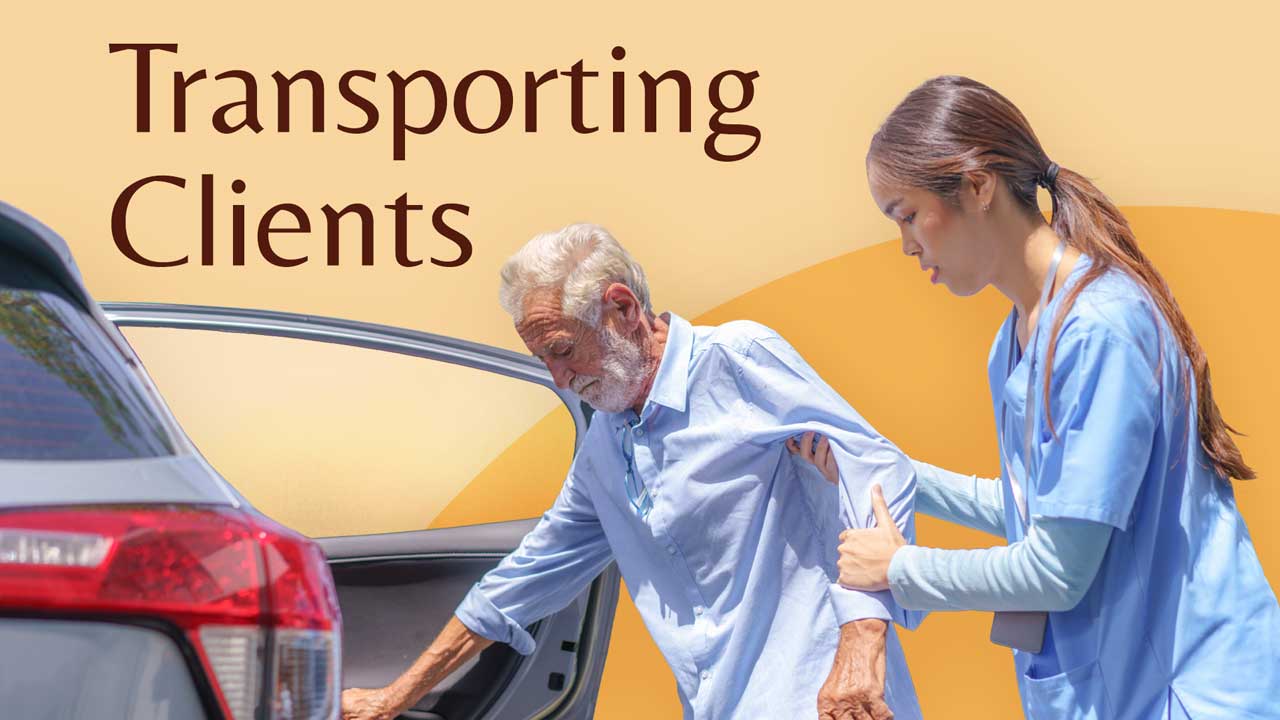Clients living in residential care facilities or receiving care at home may be isolated due to illness, disability or frailty that prevents them from driving or moving around the community independently.
In order to ensure that these clients can maintain a level of freedom, participate in their communities and access essential services, healthcare organisations may offer transportation assistance.
While these services can positively contribute to clients’ quality of life and create opportunities for independence and social interaction, there are also a variety of risks that need to be mitigated.
When transporting clients, you have a responsibility to ensure their safety, as well as your own.
Potential Hazards When Transporting Clients
There are a variety of hazards associated with transporting clients that may lead to accidents, injuries or harm. There may be adverse outcomes for drivers, clients or all parties involved. Potential hazards include:
- Hazardous manual handling (e.g. helping clients get in and out of vehicles)
- Unrestrained mobility aids and assistive equipment
- Client behaviour
- Unsafe or unroadworthy vehicles
- Poor road terrain or conditions
- Poor weather or visibility
- Fatigue
- Medications that have been taken by the driver
- Distractions
- Unfamiliarity with the vehicle
- Ignoring road rules
- Rushing
- Route changes
- Remote or isolated locations
- Passenger illness
- Vehicle breakdown
- Infectious illnesses being transmitted between clients and staff.
(Wilshire Community Services 2018; Workplace Health and Safety Queensland 2018; Mid-Western Regional Council 2019)

Safety Considerations When Transporting Clients
Equipment
Clients may need to bring mobility aids or assistive equipment with them when travelling. Examples include:
- Wheelchairs
- IV stands
- Braces
- Canes
- Walkers
- Ventilators.
(Training.gov.au 2015; Wilshire Community Services 2018)
Equipment should always be safely restrained during the journey so that it does not cause injury to the driver or passengers (WorkSafe Victoria 2022).
The Vehicle
The vehicle used should be appropriate for transporting clients, as well as any equipment they may require. Keep in mind the number of doors, the seat height and other factors that may make the vehicle difficult for clients to access. Depending on the clients you are transporting, the vehicle may also require extra features such as swivel seats or storage space (WorkSafe Victoria 2022).
The vehicle must be roadworthy, well-maintained and clean. All instruments and mechanisms should be working correctly. The interior should be free of any debris or clutter that could lead to injury. In order to ensure passengers are comfortable, the vehicle should be equipped with heating and cooling systems, along with appropriate ventilation (Wilshire Community Services 2018).
The vehicle should be properly inspected prior to transporting clients (ACARES 2017). When checking the vehicle, ensure that:
- Tyres are undamaged, pressurised and have enough tread depth
- Petrol, oil, coolant and windscreen wash levels are correct
- Brakes are working correctly
- Lights and indicators are working correctly
- Washers and wipers are working correctly
- Door handles and locks are working correctly
- There is no damage to the windscreen or windows
- Mirrors are positioned correctly
- Any loose loads are restrained
- Seatbelts and head restraints are adjusted
- The spare tire is in place.
(Wilshire Community Services 2018)
Loading and Unloading Passengers

The loading and unloading process can be dangerous and cause injuries to staff and clients, especially in the dark. Always conduct a risk assessment before loading or unloading clients and ensure the vehicle is parked in a safe and appropriate position before commencing (Solent NHS Trust 2018).
Any manual handling of passengers and their equipment should be performed with care to ensure the safety of staff and clients. Only perform manual handling tasks if you have been appropriately trained to do so (Mid-Western Regional Council 2019).
Driving Safely
In order to avoid an accident on the road, defensive driving is essential. You must always consider others while driving, with the goal of keeping yourself and all others on the road safe. Defensive driving requires you to be conscientious, careful and focused (Wilshire Community Services 2018).
When transporting clients:
- Always ensure you are fit to drive
- Never drive if a medication is causing drowsiness, slow reaction time, impaired judgment or dizziness
- Ensure that all passengers are wearing seatbelts
- Never smoke or allow passengers to smoke in the vehicle
- Avoid driving in poor conditions
- Always obey road laws and regulations
- Take the most direct route to your destination and avoid making detours
- Choose the smoothest route possible, avoiding rough terrain such as potholes or construction areas
- Allow enough time for travelling, traffic, parking and disembarking/transferring
- Keep doors locked while travelling
- Ensure pick-up and drop-off locations are on level ground
- Ensure the client has reached the drop-off location safely before driving off
- Never leave clients unattended in the vehicle.
(Wilshire Community Services 2018; WorkSafe Victoria 2022; ACARES 2017; Workplace Health and Safety Queensland 2018)
Working with Clients

Clients are often frail and have special care needs. It is important to monitor your clients’ conditions while they are using transportation services in case they suddenly become ill or deteriorate. If you recognise any changes in a client’s behaviour or condition, notify the appropriate personnel and call emergency services if required (Mid-Western Regional Council 2019; Wilshire Community Services 2018).
You should also be familiar with any equipment that could indicate an emergency situation. For example, a patient’s ventilator alarm might go off, meaning the patient is not receiving any air (Wilshire Community Services 2018).
Always treat clients with respect and empathy. Some clients may have difficulty accepting their loss of independence, so be patient and understanding. Identify any clients who may be prone to violence, aggression or dangerous behaviour and make appropriate arrangements to ensure transportation is safe (e.g. seat them further away so that they cannot interfere with your driving). Pull over if a client is displaying violent or concerning behaviour that places you or other passengers’ safety at risk (Wilshire Community Services 2018; WorkSafe Victoria 2022; ACARES 2017).
Your organisation should have a procedure in place for managing violent or aggressive behaviour.
In some cases, clients may be able to move around freely at their destination until they are picked up. If a client does not appear for their scheduled return service, all reasonable attempts should be made to locate them, while considering the safety and comfort of any other clients who are present. If you are still unable to find the lost client, the police may need to be called (Mid-Western Regional Council 2019).
Conclusion
Many clients who are unable to move around in the community independently rely on transportation services to socialise and go about their daily activities.
While these services are necessary for the health and wellbeing of clients, there are a number of potential risks associated with picking up, driving and dropping off vulnerable people. In order to keep yourself and your clients safe, it is essential to work conscientiously and follow all required procedures.
Test Your Knowledge
Question 1 of 3
What steps should you take if you recognise a deteriorating client?
Topics
References
- Accommodation and Care Solutions 2017, POL – 1.16 Use of a Support Workers Vehicle to Transport Clients, ACARES, viewed 31 August 2023, https://acares.com.au/wp-content/uploads/2019/06/POL-1.16-Use-of-a-Support-Workers-Vehicle-to-Transport-Clients.pdf
- Training.gov.au 2015, Unit of Competency Details: CHCCCS026 - Transport Individuals, Australian Government, viewed 31 August 2023, https://training.gov.au/Training/Details/CHCCCS026
- Mid-Western Regional Council 2019, Policy: Mudgee Community Transport, New South Wales Government, viewed 31 August 2023, http://www.midwestern.nsw.gov.au/globalassets/S_2572/policies/policy---adopted---community-transport.pdf
- Solent NHS Trust 2018, Transportation of Clients / Colleagues by Staff in Vehicles Policy, National Health Service, viewed 31 August 2023, https://www.solent.nhs.uk/media/1316/transportation-of-clients-colleagues-by-staff-in-vehicles-policy.pdf
- Wilshire Community Services 2018, Volunteer Handbook for Transporting Clients, Wilshire Community Services, viewed 31 August 2023, https://www.wilshirecommunityservices.org/wp-content/uploads/sites/4/2018/01/Driver-Packet.pdf
- Workplace Health and Safety Queensland 2018, A Guide to Working Safely in People’s Homes, Queensland Government, viewed 31 August 2023, https://www.worksafe.qld.gov.au/__data/assets/pdf_file/0018/82503/community-working-safely-in-peoples-homes.pdf
- WorkSafe Victoria 2022, How to Safely Transport People and Equipment in Vehicles, Victoria State Government, viewed 31 August 2023, https://www.worksafe.vic.gov.au/how-safely-transport-people-and-equipment-vehicles
 New
New 
